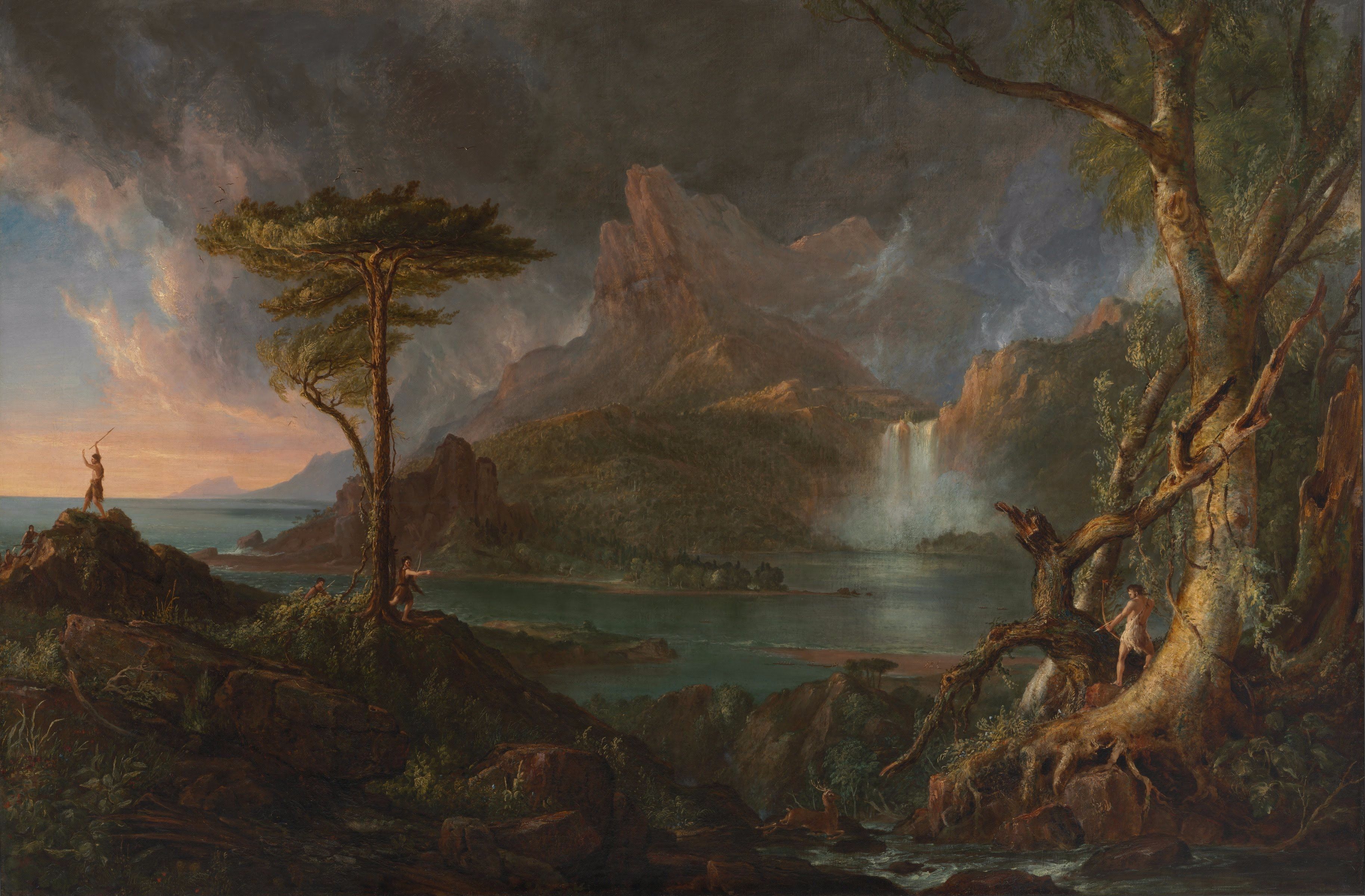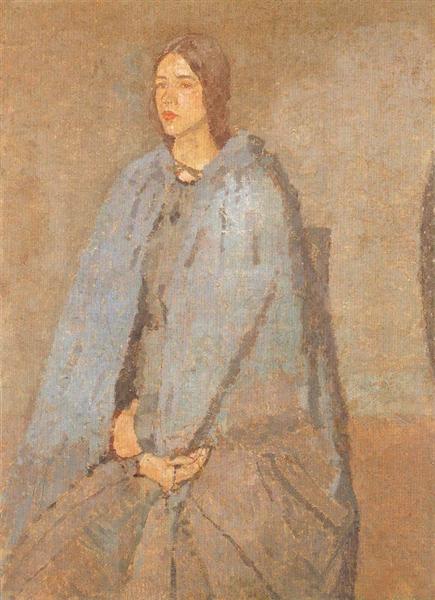

Fu Baoshi’s paintings mesmerize us with their awesome depictions of precipitous heights, pouring waterfalls, and lush foliage. But peeking out amidst these tour de forces of nature, almost hidden amidst them, are minute figures of people, mere ants immersed among giants. My question is, what are the functions of these people in Fu Baoshi’s paintings? If the focus of the painting is nature why include them at all? If the intention is to illustrate on the relationship between nature and people why create such an imbalance between the two?
There are also several painters in the Western tradition, especially among the Romantics, who are famous for their paintings of people dwarfed by nature and the scenery around them. A notable example is Thomas Cole. How does Fu’s representation compare against Cole’s? Are their similarities beyond the size of their figure? Differences? These are some of the questions I hope to explore through my paper.




















